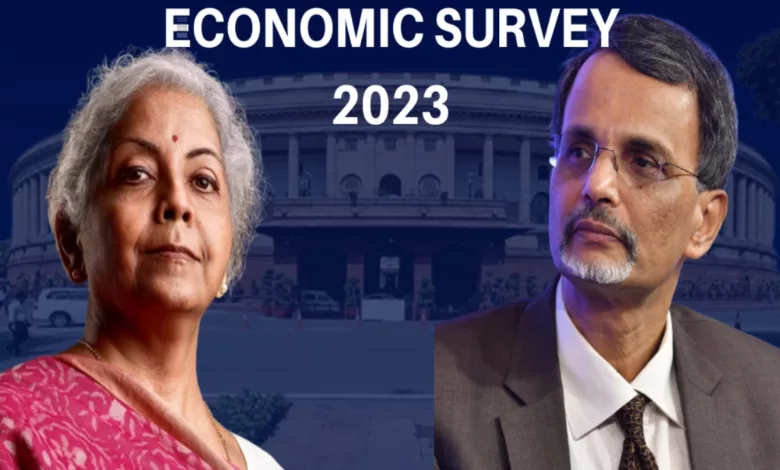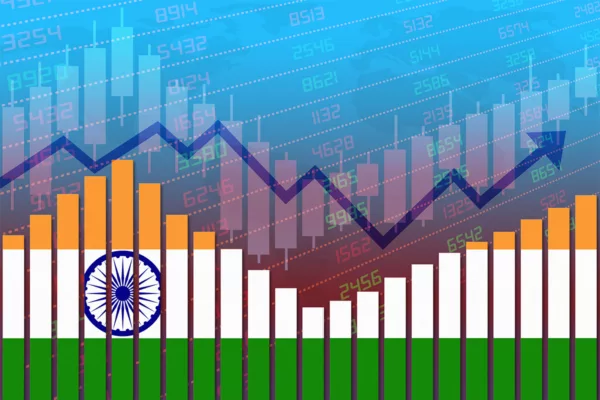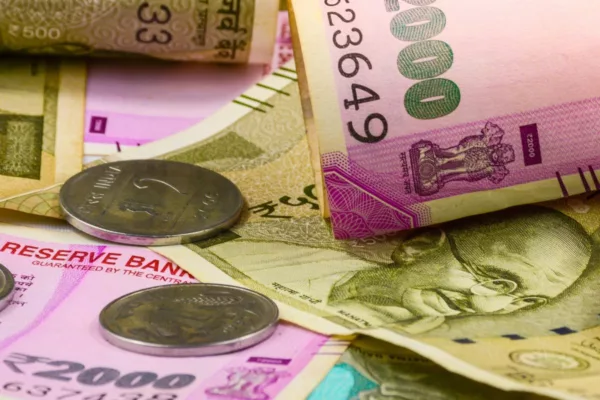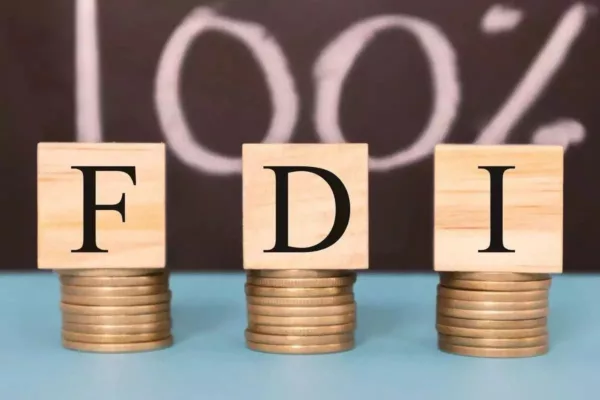Economic Survey Forecasts A 6.5% GDP Growth Rate For India In FY 2024

Economic Survey Forecasts A 6.5% GDP Growth Rate For India In FY 2024
On Tuesday, President Droupadi Murmu spoke to a joint Parliamentary session and the two Houses. Following President Murmu’s address, Union Finance Minister Nirmala Sitharaman gave the pre-Budget Economic Survey 2022-23.
The Ministry of Finance’s Department of Economic Affairs, directed by Chief Economic Adviser V Anantha Nageswaran, compiled the data and analysis that comprise the Economic Survey. It offers details on the state of the economy, several indicators, and projections for the coming financial year 2022–2023 (April–March).
According to reports, the first economic survey was created in 1950–1951, when it was still a component of the Budget. It was split off from the Budget in the 1960s.
The following are the main points from the Economic Survey:
- According to the Economic Survey, although India’s economic growth is expected to decelerate to 6.5% in the fiscal year beginning in April, it would still be the world’s fastest-growing major country. India’s GDP is projected to increase by 6.5% in 2023–2024 compared to the 7% growth anticipated in the current fiscal year (April 2022–March 2023) and the 8.7% growth expected in the previous year.
- According to the poll, India has the world’s third-largest purchasing power parity (PPP) economy and the fifth-largest exchange rate economy. The report stated that the economy had almost made up for what it had lost, restarted what had stalled, and re-energised what had slowed down due to the pandemic and the conflict in Europe.

- The report states that the 6.8% retail inflation projected by the RBI for the upcoming fiscal year is neutral concerning private spending and investment incentives. The study added that persistent inflation could extend the tightening cycle and cause borrowing prices to remain “higher for longer.” Retail inflation in India went below 6% in November, marking the first time in 11 straight months (beginning in January 2022) that it had been higher than the maximum tolerance limit set by the RBI.
- The current account deficit (CAD), which may continue to worsen due to rising global commodity prices, was also called for in the poll. According to the latest Reserve Bank data, a more significant trade gap caused the CAD to increase from 2.2% of GDP in April-June to 4.4% in the third quarter ending in September. “Commodity prices have fallen from record highs, but they are still higher than before the conflict.
- India’s total import bill would increase due to high commodity prices and strong local demand, contributing to unfavourable developments in the current account balance. These could be made worse by stagnant export growth due to slowing global demand. It warned that the currency might face pressure to depreciate if the current account deficit widens.
- According to the Economic Survey, the Indian rupee may continue to face depreciation pressure due to exports plateauing and the subsequent widening of the current account deficit. “Risks to the current account balance originate from many sources,” the statement read.

- The report said that improving building activity and a booming real estate market helped to create jobs and made it easier for migrant workers to return to the cities. This is crucial since many individuals have lost their jobs due to the limitations put in place throughout the several pandemic waves that have occurred since March 2020.
- According to the Economic Survey, loan growth for MSMEs is anticipated to be rapid in the fiscal years 2023–2024, assuming inflation is low and credit costs are reasonable. Between January and November 2022, the Micro, Small, and Medium Enterprises sector saw credit grow by roughly 31%.
- Government spending on infrastructure has stimulated private investment, and according to the Economic Survey 2022–23, the government would be able to reach its budget aim of Rs. 7.5 lakh crore for the latest financial year. Capital expenditures (capex) by the federal government surged by 63.4% year-over-year during the initial eight months of FY23, contributing to the expansion of the Indian economy. The research claims that the influx of private capex started in the quarter from January to March of 2022.
- The Economic Survey forecasted that FDI in the country would rise in the following months due to India’s swift economic expansion and attempts to improve the business environment further. According to the study, the surge in global uncertainty following the Russia-Ukraine war caused FDI equity inflows in the manufacturing sector to fall below their equivalent level in the first half of the current fiscal year (April-September).

- According to the Economic Survey published on Tuesday, home prices have begun to stabilise following a two-year decline, and unsold inventories have reduced due to increased demand. The research also predicted lower costs due to eliminating import duties on several building materials.
- According to the report, the country’s civil aviation industry has “huge potential” due to rising middle-class demand, increased disposable incomes, and favourable demographics. Air travel has recovered since the relaxation of restrictions connected to the coronavirus outbreak.
- According to the poll, agriculture has performed well overall but has to “re-orient” given current issues, including the adverse effects of climate change and growing input costs. Additional difficulties include fragmented landholdings, inadequate farm mechanization, low productivity, covert unemployment, and increasing input costs.
Edited by Prakriti Arora




